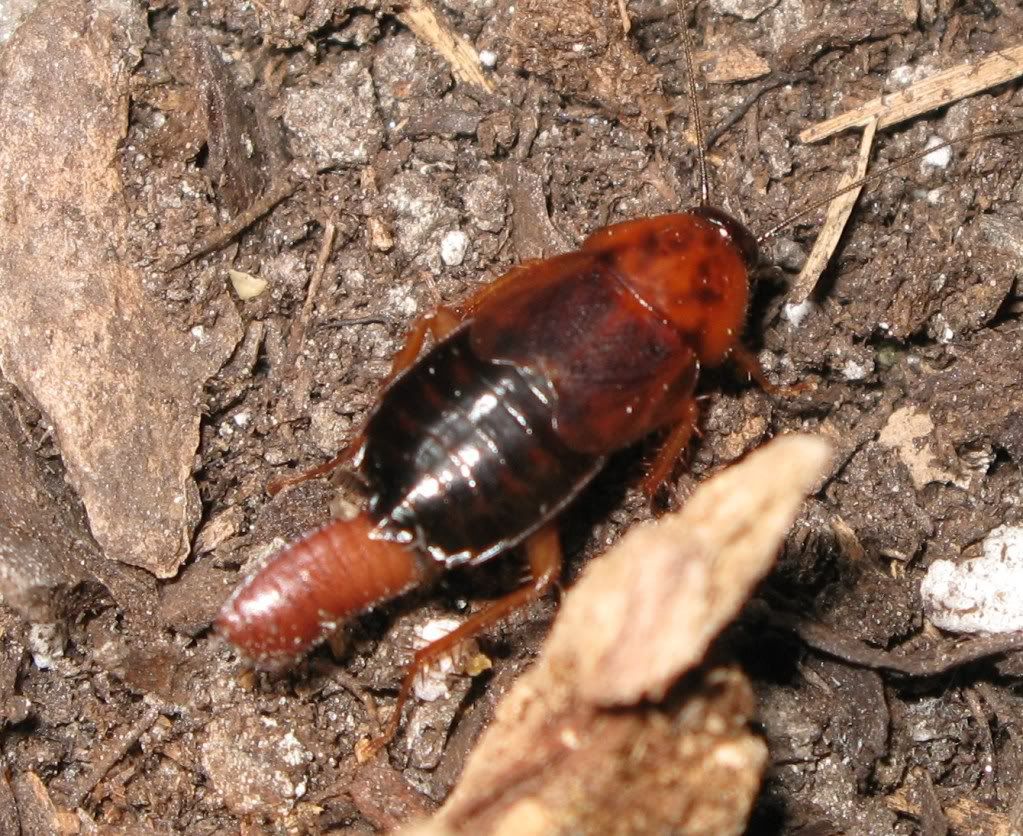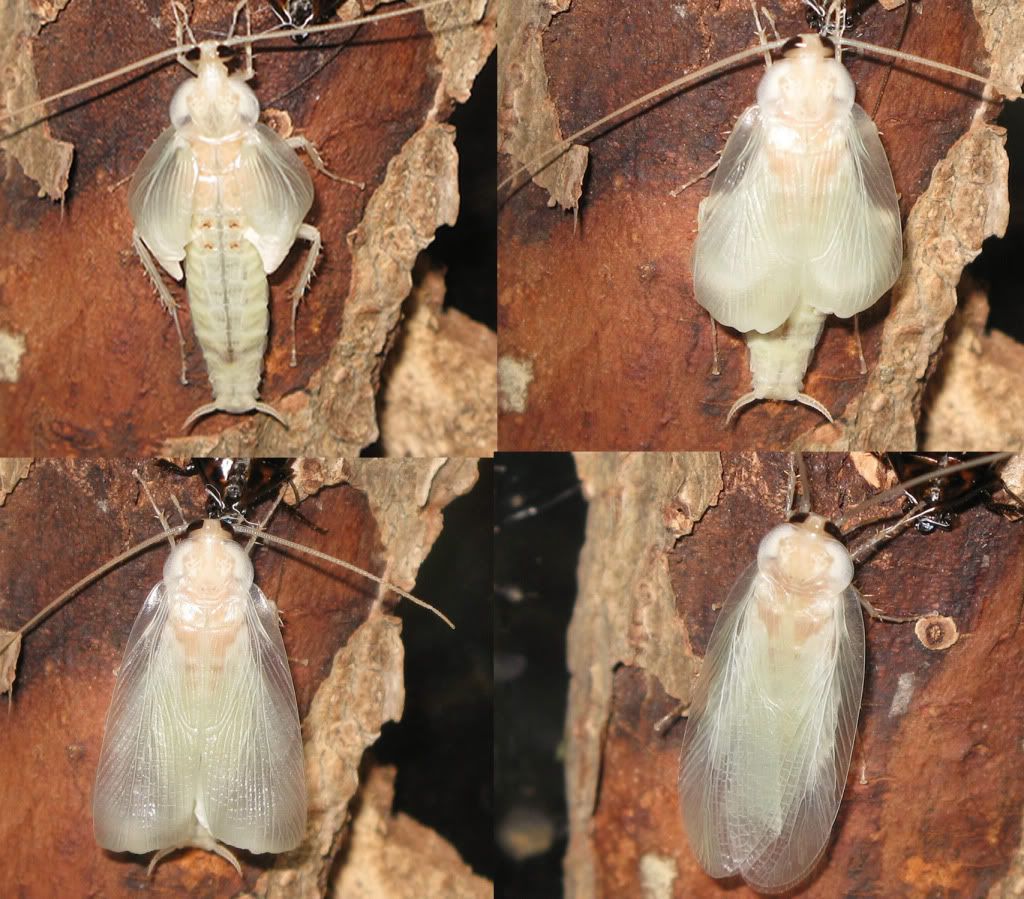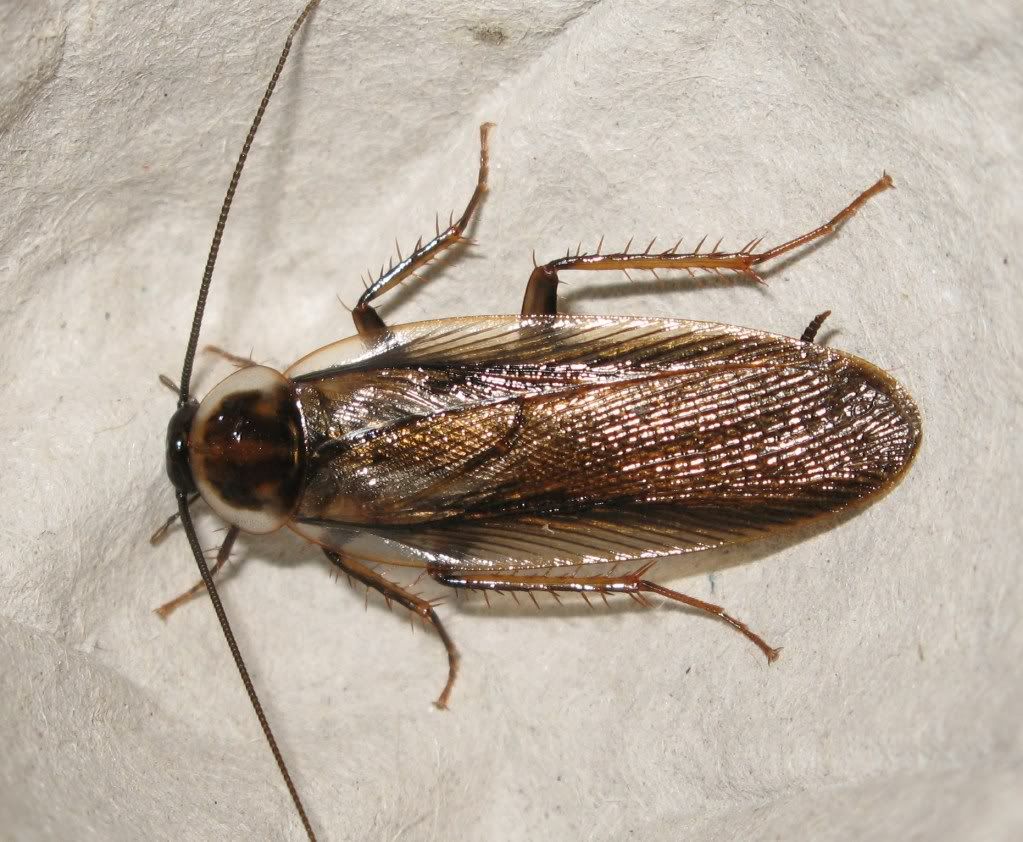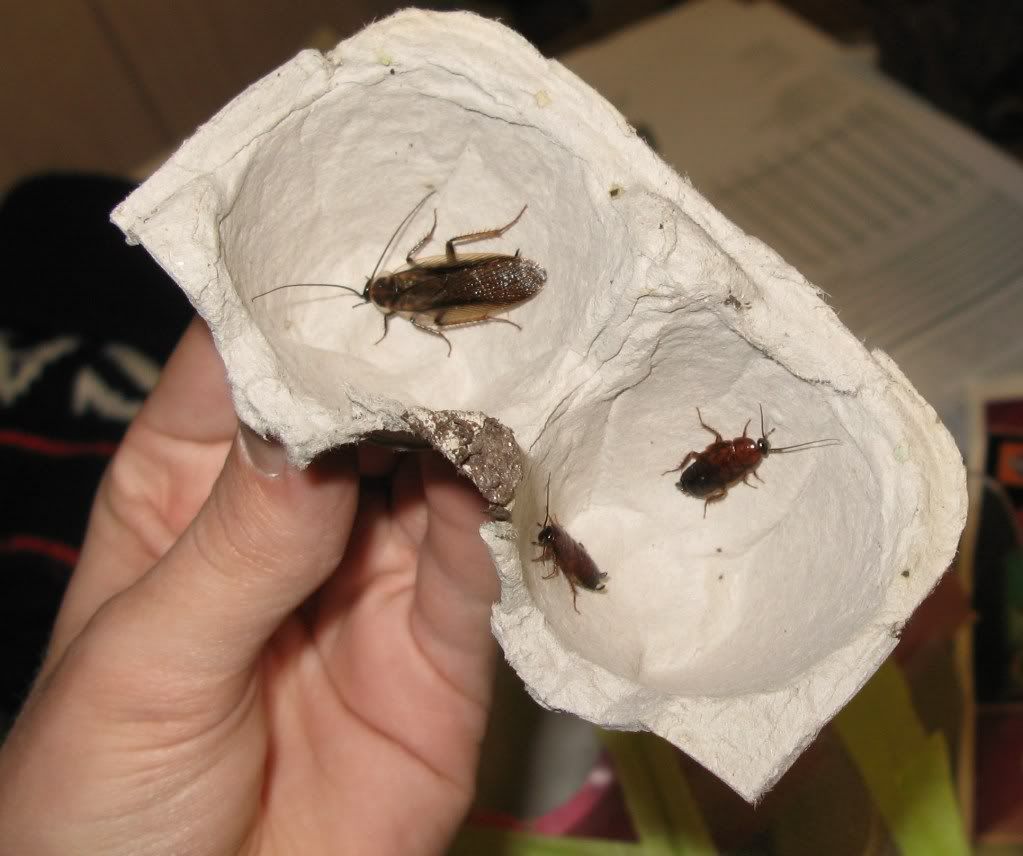Guest viewing limit reached
- You have reached the maximum number of guest views allowed
- Please register below to remove this limitation
- Already a member? Click here to login
You are using an out of date browser. It may not display this or other websites correctly.
You should upgrade or use an alternative browser.
You should upgrade or use an alternative browser.
Parcoblatta molt
- Thread starter Vulgaris
- Start date
Vulgaris
Fifth Instar
OK so I removed the last ooth and put it in a separate container of substrate after the female just dropped it under the piece of wood. The other day I looked and another female was carrying one and today when I lift up the cage and look from the bottom, I see the other ooth burried under the substrate. For now I just left it because it seems to be in a good spot.
Do you guys think they will eat any hatchlings that might hatch out? This is my first time raising any kind of roaches (in case you could not tell).
heres a pic of this female and her ooth before she burred it
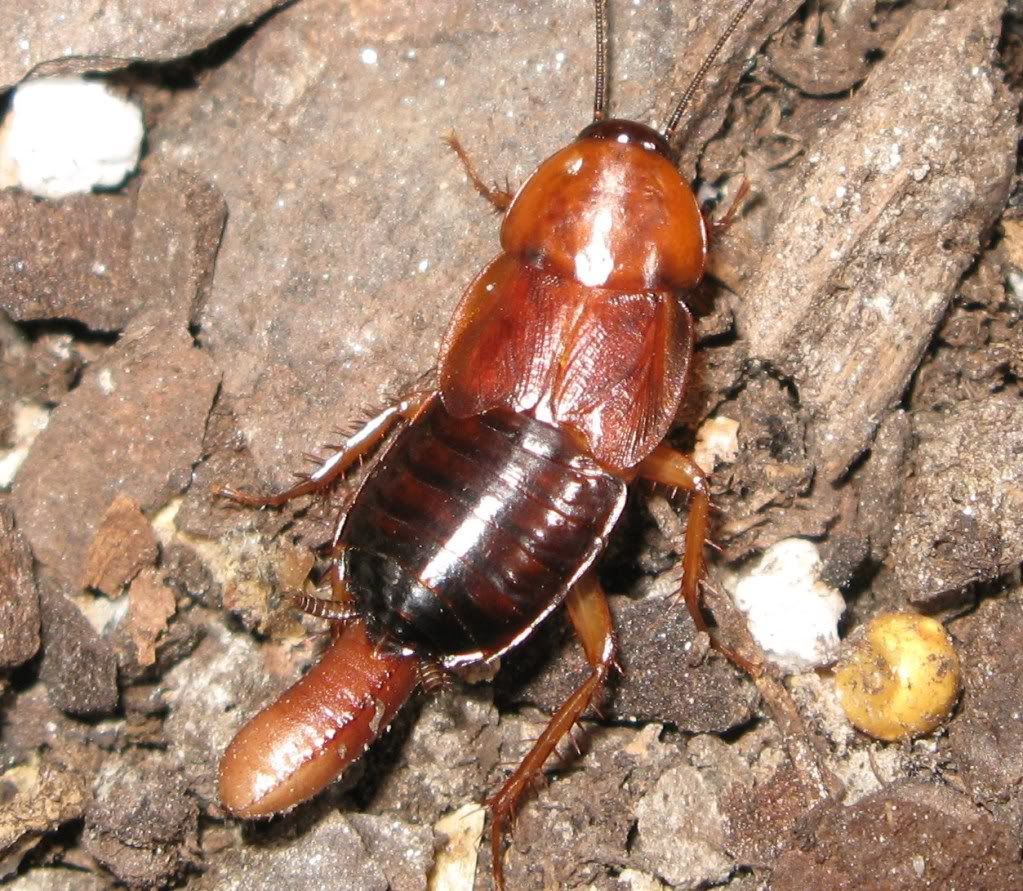
Do you guys think they will eat any hatchlings that might hatch out? This is my first time raising any kind of roaches (in case you could not tell).
heres a pic of this female and her ooth before she burred it

Last edited by a moderator:
BugmanPrice
Twelfth Instar
I'm pretty sure having the macropterous male is one characteristic of the genus.I wonder if there are micropterous male Parcoblatta?
@Vulgaris- This is the same colony you had those males that got out into your house from right? The males could have mated before they decided to play "escape from Alcatraz".
BugmanPrice
Twelfth Instar
If they for sure weren't adults when the males were around then that puts us back at square one.
Vulgaris
Fifth Instar
There was three males and three females. They were actually easy to keep track of. The males matured and escaped waayy before any of the females matured. During their adult lives, the females never came in contact with any mature male
Here's a quick pic of the buried ooth. I hope the adults do not eat the hatchlings if it does hatch
http://i237.photobucket.com/albums/ff117/v.../IMG_3126-1.jpg
Here's a quick pic of the buried ooth. I hope the adults do not eat the hatchlings if it does hatch
http://i237.photobucket.com/albums/ff117/v.../IMG_3126-1.jpg
Last edited by a moderator:
Vulgaris
Fifth Instar
I guess it is an extremely remote possibility that one male made it back to mate and I did not notice. But then it comes down to which is more probable _ This theory, or the parthenogenesis theory?
Feed them to wasps?! When the females live out their lives, I will send one to an expert for species ID. I will probably pin the other two and keep them. I hope the ootheca hatch!
And by the way, I have another noob question. I have two new male nymphs as you have read in my previous posts. One is an enormous last instar. He will be the kind with the black wings (a completely different species than what I have). The other is a very orange individual (still a late instar nymph) who is probably going to be an orange adult but a different species than the others.
Will these actually be able to breed with the females? I did not plan on interbreeding, but I am kind of keeping them in the same enclosure so...
Feed them to wasps?! When the females live out their lives, I will send one to an expert for species ID. I will probably pin the other two and keep them. I hope the ootheca hatch!
And by the way, I have another noob question. I have two new male nymphs as you have read in my previous posts. One is an enormous last instar. He will be the kind with the black wings (a completely different species than what I have). The other is a very orange individual (still a late instar nymph) who is probably going to be an orange adult but a different species than the others.
Will these actually be able to breed with the females? I did not plan on interbreeding, but I am kind of keeping them in the same enclosure so...
Last edited by a moderator:
I was thinking the exact same thing. In the wild I'd assume Parcoblatta males are experts at finding females, seeing as they have such short lives and a mature female ready to mate may be rare...Maybe one of the escapees made it back in to mate. Or (more likely) not. The adults won't eat the hatchlings.Demon, he's raising 'em as pets.
Vulgaris
Fifth Instar
hahaha, well then that arises the problem of how they survived indoors (without me catching sight of them during the search, may I add) for the weeks that it took for the females to mature. They were certainly not living in the enclosure (I would have seen them because I usually lifted up the piece of wood to check on the females every couple of days). I suppose they could have just returned in the dead of night for food, but I am not convinced.
demon
Third Instar
LOL i ment like breed them as feeders or have two colonies one for pets and the other as feeders.I guess it is an extremely remote possibility that one male made it back to mate and I did not notice. But then it comes down to which is more probable _ This theory, or the parthenogenesis theory?Feed them to wasps?! When the females live out their lives, I will send one to an expert for species ID. I will probably pin the other two and keep them. I hope the ootheca hatch!
And by the way, I have another noob question. I have two new male nymphs as you have read in my previous posts. One is an enormous last instar. He will be the kind with the black wings (a completely different species than what I have). The other is a very orange individual (still a late instar nymph) who is probably going to be an orange adult but a different species than the others.
Will these actually be able to breed with the females? I did not plan on interbreeding, but I am kind of keeping them in the same enclosure so...

